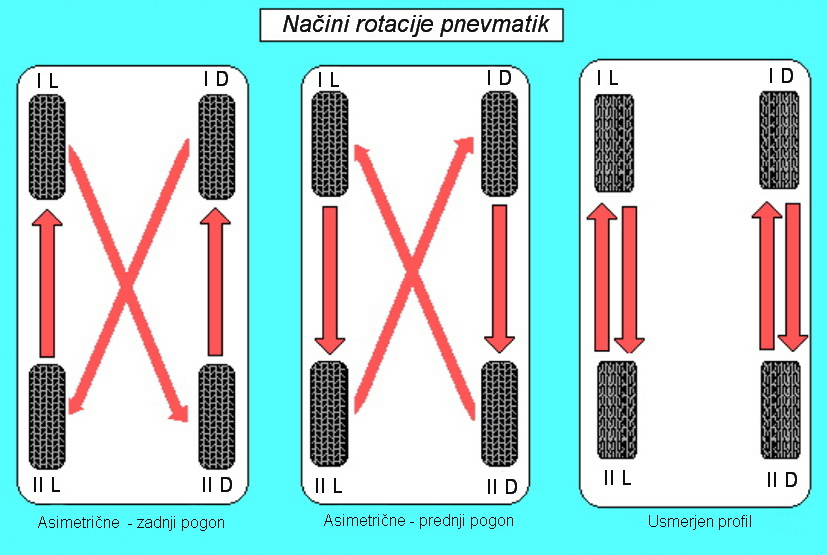My OB is approaching 10K miles and, while I changed myself oil twice (3k and 8K) I did not rotate tires, so now having second thoughts. If I do it myself, do I need 2 jacks or 4 jacks (i.e. is rotational pattern front to back same side or opposite side like driver front to passenger rear). Also, for a second jack, can I use it from non Subaru vehicle and will it damage the paint (still apprehensive or anything that touches OB, that includes family).
Save Share
JavaScript is disabled. For a better experience, please enable JavaScript in your browser before proceeding.
1 - 20 of 33 Posts
In reality, you only need one jack no matter what you do. First, if you only have one jack and nothing else, you can use the spare as a "place holder". Second, jack stands are always useful. You only need to lift one corner at a time, why have 2-4 jacks?
Save Share
I change F to R, on the same side. Rotate at 5K.
The big difference is F to R, given 4 tires there’s a slight side/side benefit (5 tires and it might be worth it). Of course, you can only do side/side with asymmetrical tires.
The usual warning with no body parts under car with jacks only remains. If you’re going to be working with cars repeatedly, get a floor jack (I have 2).
Save Share
If one needs to move tires in X pattern it is helpful to have 4 jacks and lift all tires. i.e. to move from driver front to passenger back, etc. I am not sure of rotation pattern, I googled and found one reference to X pattern and another saying do not do X pattern on Subarus, and pattern should be rotate same side (driver front to back, etc) due to Subaru AWD.
Spare suggestion might work, I did not think of it, but will require more lifting.
Save Share
I rotate my tires every 5000 miles (and I am coming up on 30,000 this week). I use the spare as a placeholder as mentioned above.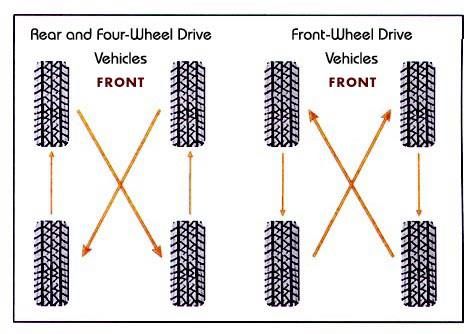 Since the tires aren't directional, my pattern is LF to LR, LR to RF, RF to RR, and RR to LF. Using the spare means I have to jack up the LF twice, but it only takes about 30 minutes to do the whole job. I still have about 5 mm of tread left (to the wear bars), and I don't see much if any snow, so I hope to make it another 10-15K before thinking about replacing them.
Since the tires aren't directional, my pattern is LF to LR, LR to RF, RF to RR, and RR to LF. Using the spare means I have to jack up the LF twice, but it only takes about 30 minutes to do the whole job. I still have about 5 mm of tread left (to the wear bars), and I don't see much if any snow, so I hope to make it another 10-15K before thinking about replacing them.
Save Share
If you want to have the whole car off the ground, just buy 4 jack stands. Helluva lot cheaper than 4 floor jacks.....
The Discount Tires around my house do rotations for free, just an FYI. Sure beats buying 4 jacks to do it your way, LOL.
Save Share
How long are the stock tires rated to last (if, indeed, tires are rated in such a fashion)?
bdeyes said:
I rotate my tires every 5000 miles (and I am coming up on 30,000 this week). I use the spare as a placeholder as mentioned above. Since the tires aren't directional, my pattern is LF to LR, LR to RF, RF to RR, and RR to LF.
Using the spare means I have to jack up the LF twice, but it only takes about 30 minutes to do the whole job. I still have about 5 mm of tread left (to the wear bars), and I don't see much if any snow, so I hope to make it another 10-15K before thinking about replacing them.
Click to expand...
Save Share
Unless your Owner's Manual is missing a page or two, the topic of the approved rotation pattern should be covered in the manual.
As was already stated, you just need one jack, although a floor jack is a very good investment as it is much easier to use than the standard OEM jack. You can get reasonably-priced floor jacks from Harbor Freight.
Incidentally, since you waited until 10k to rotate your tires, you will need to stay with a 10k interval for future tire rotations with this set of tires. However, once you replace this set of tires, I suggest that you rotate the new tires either every 5k or every 7.5k, as this will result in more even tire wear from one tread to another.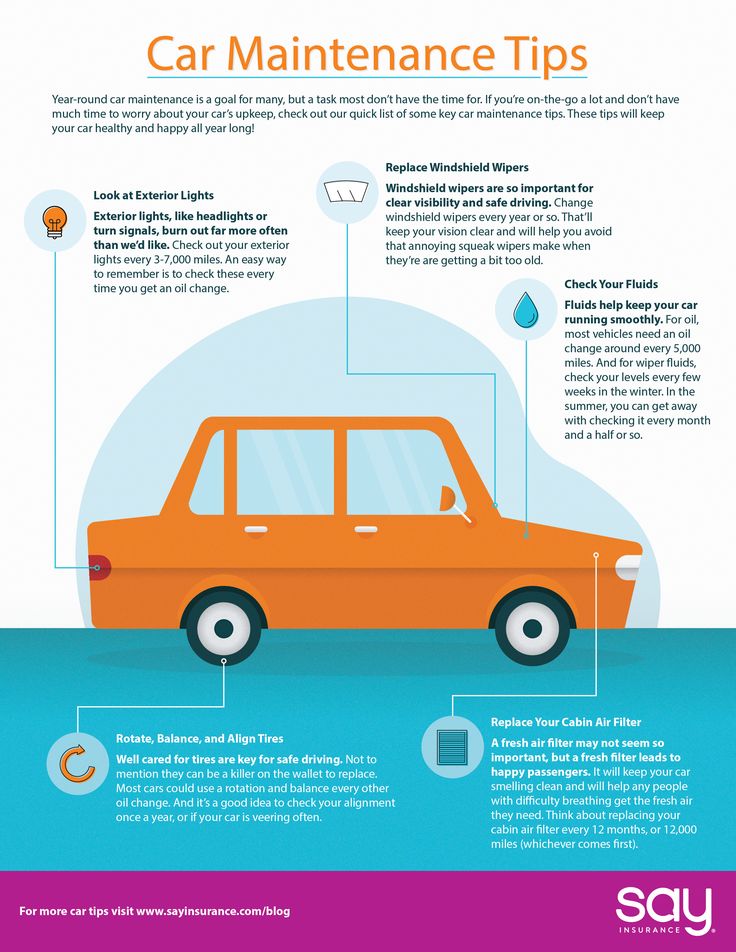
vshun said:
My OB is approaching 10K miles and, while I changed myself oil twice (3k and 8K) I did not rotate tires, so now having second thoughts. If I do it myself, do I need 2 jacks or 4 jacks (i.e. is rotational pattern front to back same side or opposite side like driver front to passenger rear). Also, for a second jack, can I use it from non Subaru vehicle and will it damage the paint (still apprehensive or anything that touches OB, that includes family).
Click to expand...
Save Share
Manual in 11.40 section has 2 rotation patterns (one is X and another same side), says your vehicle can have either one, I will need to go back and look for sticker or something to see what is for my model.
I wonder if it is same side, can optimize it by using jack from another vehicle and lift one side completely, swap both tires, lower it down and repeat on the other side. Should be faster than using spare and going up and down. I only wonder if jacks are universal or interchangeable between makes and models, I would be apprehensive about scratching the car with other jack or doing some other damage.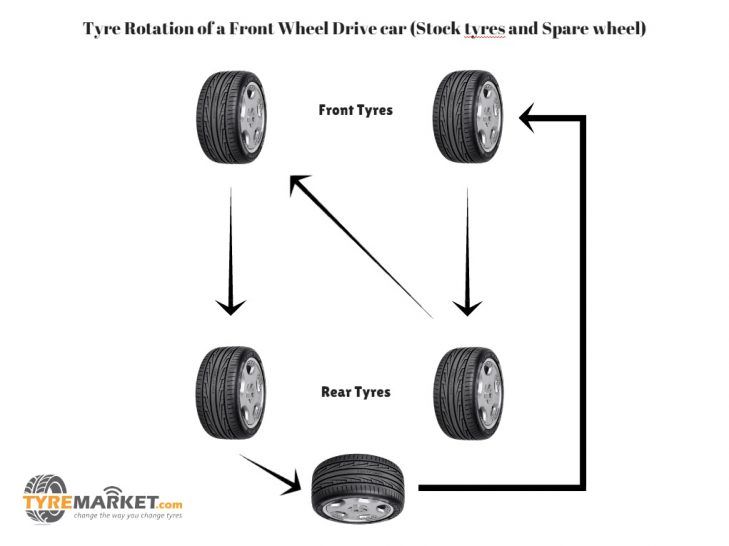 ..
..
Save Share
It has nothing to do with model and everything to do with the tire type. Directional tread paterns have to stay on the same side fo the car unless you dismount them from the rims and remount on the rims for the other side. Tires with directional tread are marked on the sidewall with an arrow indicating the direction fo rotation. The OE contis are not directional and can use either rotation pattern. I use both alternating with each rotation. And you do not have to stay at 10k for remaning rotations. They will handle more frequent rotations as needed without any ill effects. as for jacks from other vehicles, as long as it is designed to lift the other vehicle in the same way( ie at the rocker pannel pinch weld), you should be fine.
Save Share
Off the top of my head I can't remember what size the spare is and its too cold to run out and check, but do any of you rotate in the spare?
Save Share
You don’t rotate the spare, it’s a doughnut tire. The reason I only rotate front/back, ie: 4 tires.
The reason I only rotate front/back, ie: 4 tires.
Save Share
I do the same as bdeyes (post 5) -- but instead of using the spare, which is a donut, I use one of my four winter tires on rims as the temporary "fifth wheel".
My winters are directional, so I can only go front-back, in which case if I have to rotate them during the season, I raise one side using a second floor jack (borrowed from my neighbor, also a Subaru owner).
Save Share
Thread revival...
I was looking into rotating tires and found this thread... Thought I'd throw in a pic of the manual page for a 2011 OB, found here.
vshun said:
Manual in 11.40 section has 2 rotation patterns (one is X and another same side), says your vehicle can have either one, I will need to go back and look for sticker or something to see what is for my model.
I wonder if it is same side, can optimize it by using jack from another vehicle and lift one side completely, swap both tires, lower it down and repeat on the other side.Should be faster than using spare and going up and down. I only wonder if jacks are universal or interchangeable between makes and models, I would be apprehensive about scratching the car with other jack or doing some other damage...
Click to expand...
Tire Rotation Outback.png
109 KB Views: 14,097
Reactions:
SubarubyroooSave Share
I would have rotated tires on my own but my Subaru dealer told me that the tires rotation includes wheels balancing which is of course above my skills and pay scale
Is wheel balancing necessay and integral part of each tires rotation every 7,500 miles ?
I was thinking about skipping the tire balancing and seeing whether the steering wheel is still devoid of any shaking at high speed. I assume that if the steering wheel is steady after tire rotation (at speed at about 80MPH) then balancing is not necessary?
Save Share
And just as a safety note:
Use Jack Stand(s).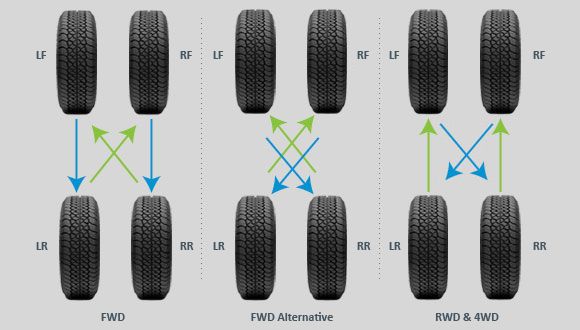 They are really inexpensive and really add safety.
They are really inexpensive and really add safety.
Save Share
On jack stands, spend a little bit more and get the heavy duty one. My rule of thumb is that each jack should be rated to hold the full weight of the car, plus a bit extra. I use 2 1/2 ton stands. They were like $35 a pair for Craftsman ones. You can find others for even less.
Talking about jacks... I have a gravel driveway and no garage, so a floor jack doesn't work well for me. I usually use a car jack. I have noticed that some cars use a hex nut on their jack to raise and lower it with the lug wrench as a handle, instead of the hook setup that Subie and others use. Would it be safe to use a impact wrench on one of those hex nut jacks? That would be a lot easier than manually cranking up a car.
Save Share
No, the wrench spinning at 50K would jerk the load. The idea is to lift the car slowly and keep an eye (for problems) until raised off the ground. This is why car jacks normally have slow actions (fine thread, low flow hydraulics). They have ‘racing’ jacks, I wonder if those have faster actions.
This is why car jacks normally have slow actions (fine thread, low flow hydraulics). They have ‘racing’ jacks, I wonder if those have faster actions.
<O
How are you jacking your car on gravel?
Reactions:
SubarubyroooSave Share
A small sheet of plywood under the base of a car jack and them manually cranking up the car. Normally work, but I can get a bit of slip on the gravel. I tried a floor jack once, but the wheel simply broke though the plywood.
Suggestions for better options would be welcome.
Save Share
A low speed drill would work, it just has to have enough torque. And without the jerk of an impact.
Save Share
1 - 20 of 33 Posts
Top
i'm sure this has been covered before, but searching for keywords to find past threads is difficult since the keywords are so common and generic.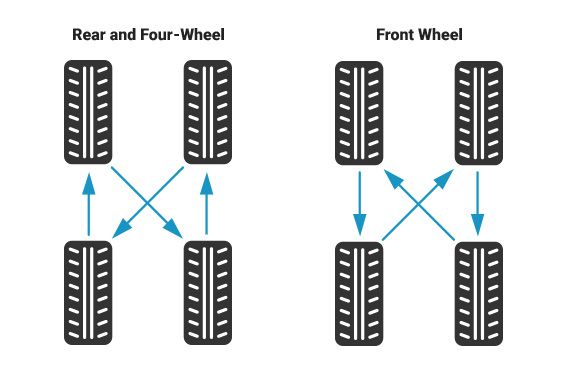 anyway, has anyone done a tire rotation method of front to back, rear to front for the 1st rotation, then on the 2nd rotation, side to side on each axle? third rotation would be front to rear, rear to front, 4th rotation would be side to side, etc. this would ultimately have each tire on all 4 corners by the 3rd rotation. i understand it requires record keeping, but are there any negatives to this method (other than the record keeping) that's not obvious?
anyway, has anyone done a tire rotation method of front to back, rear to front for the 1st rotation, then on the 2nd rotation, side to side on each axle? third rotation would be front to rear, rear to front, 4th rotation would be side to side, etc. this would ultimately have each tire on all 4 corners by the 3rd rotation. i understand it requires record keeping, but are there any negatives to this method (other than the record keeping) that's not obvious?
Save Share
JavaScript is disabled. For a better experience, please enable JavaScript in your browser before proceeding.
1 - 6 of 6 Posts
Front to back then back to front now ( a 4 tyre rotation ) is now the accepted way of of rotating tyres especially for AWD. It should be mentioned in owners manual.
With a full size spare there is a 5 tyre rotation suggested as well where tyres were crossed over from side to side as well
There are differing opinions on tyre rotations
If the tyres are directional then the rotation has to be front to back /back to front and can't be crossed over.
https://www.google.co.nz/search?q=5...X&ved=0ahUKEwiW_qqe8dvOAhXSq5QKHZLrD4EQsAQIGQ
Save Share
I've had 2 free dealership maintenance schedules done at 6000 and 12000 miles, which included tire (tyre) rotations. Both times it was front to back, back to front even though the OE Bridgestones are non-directional. The owners' manual list schemes for directional and non-directional tires. Discount Tire (a large US tire shop) has done the same thing on my other vehicles with non-directional tires. I think more important is are the tires wearing uniformly. Several years ago I bought several of these ( New Tire Tread Depth Gauge Measures 32NDS and 25 Millimeters mm Gage Guage | eBay) tire depth gages. Shown for reference. Not sure where I actually bought them. Before each rotation I check depth of each tire for my reference. So far at 12000 miles wear was been uniform.... so to comment on the OP question..... I don't think your rotation schemes would hurt anything and may or may not be beneficial if your goal is uniform wear.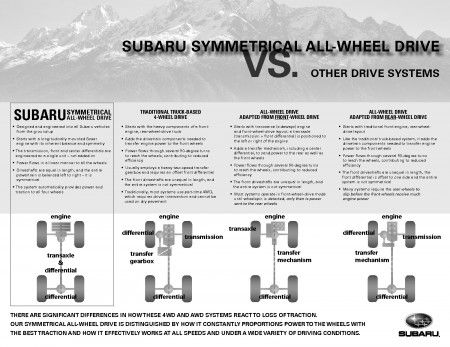
If you are doing the rotation yourself, not an issue, but my experience has been tires pressures were not readjusted when rotations were done by the "other guy".
Save Share
Manual recommends to cross the rear tires to the front and send the front tires straight to the rear.
Tire rotation - Tires and wheels - Maintenance and service - Subaru Outback Owners Manual - Subaru Outback - SubaruManuals.org
I've always crossed tires so long as the tread pattern is not directional or the tires were marked with a specific rotation direction. (e.g. FWD-->)
In my experience, tires on the two sides of the car do not wear evenly: the passenger side wears faster than the driver side. The theories behind this are debatable, but my belief is left turns here in the US are longer and faster and roundabouts are left hand turns as well.
The sequence you described will accomplish the same thing but keeps all tires on the same side for twice the interval vs only two tires. My preference would be to keep moving the tires side-to-side as frequently as reasonable, especially on this car that is pretty intolerant of treadwear differences.
My preference would be to keep moving the tires side-to-side as frequently as reasonable, especially on this car that is pretty intolerant of treadwear differences.
YMMliterallyV.
:grin2:
Save Share
i don't think the method i propose keeps tires on one side any more often than the traditional non-directional rotation method. both methods would have all tires back in the original spot by the 4th rotation. using the front-right tire as an example, both methods would have it on the right side on the 1st and 4th rotations, and on the left side on the 2nd and 3rd rotations. so they both accomplish the same goal of having each tire on each corner at least once, and back to the original spot by the 4th rotation, just in a different order.
the reason why i thought of doing it this way was that i didn't want to do the 5 tire method of jacking up each individual tire, or have the entire car on jack stands to change all 4 tires at once. this method is kind of a middle ground, where you only jack up two sides of the car during each rotation (left and right, or front and back).
Save Share
Dukey 33 got it right.
The manual states cross to the front wheels and straight back to the Rears. Conventional fwd procedure.
I asked three Subaru mechanics at three different dealers and they all concur.
Hope that helps.
Save Share
1 - 6 of 6 Posts
Top
Service and operation
Manuals
The spare wheel is attached with a long bolt. |
| The jack is attached to the rear wall. |
Combi vehicles
| Spare wheel and jack located in the back trunk in two compartments, closed with lids held by latches, to unlock them, turn them 1/4 turn. |
| The jack is located under the floor covering in a niche on the right side. |
Replacement
| PROCEDURE | ||||||||||||||||||||||||||||
| ||||||||||||||||||||||||||||
Advertisement
3. A FLAT WHEEL
If you have a flat tire while driving, never press the brake pedal hard. Continue moving in a straight line, gradually reducing your speed. Then slowly pull off the road to a safe place.
Note
- Do not jack up the vehicle when the vehicle is stopped on an incline. The vehicle may come off the jack, resulting in an accident.
- Use only the jack supplied with your vehicle. The jack supplied with your vehicle is only for use when changing the spare tire. Never stand under the vehicle while it is jacked up.
- Always turn off the engine before jacking up the vehicle. Never push or rock a vehicle that has been raised with a jack. The vehicle may come off the jack and cause an accident.
1. Stop the vehicle on a firm level surface, turn off the engine.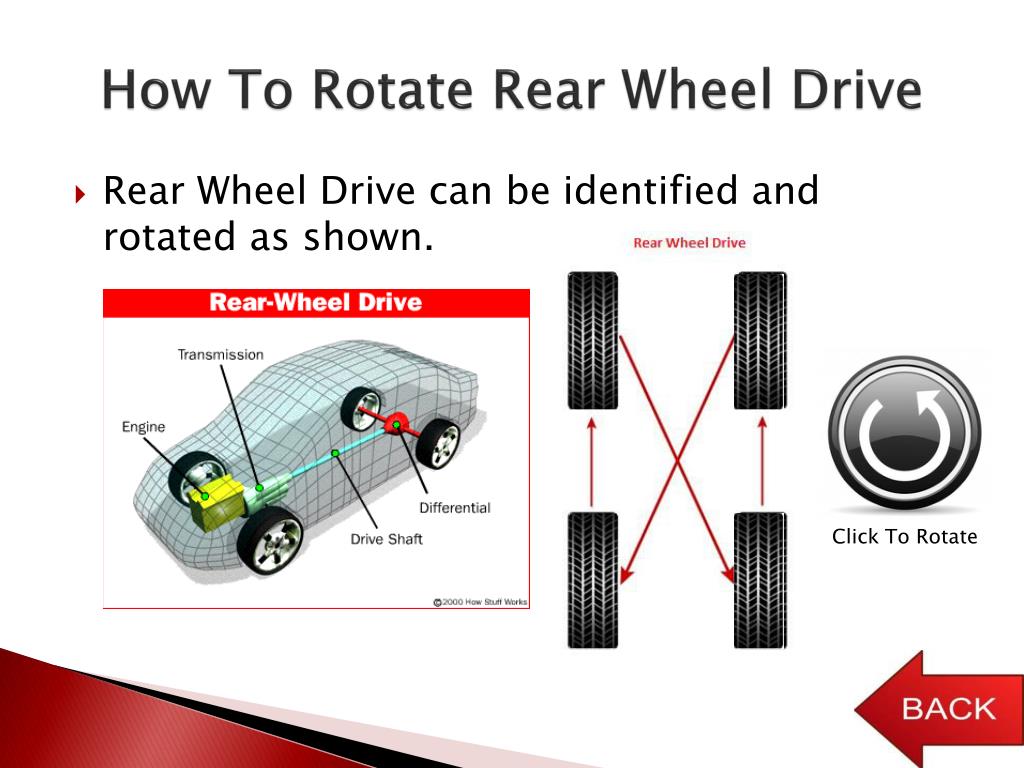
2. Apply the parking brake. Move the shift lever to reverse gear (manual transmission). Move the selector lever to P mode (automatic transmission).
3. Turn on the hazard warning lights and ask all passengers to leave the vehicle.
4. Place wheel chocks under the wheel diagonally from the flat tire.
Sedan
1. Jack and tool kit, 2. Jack handle, 3. Spare wheel.
Hatchback
1. Jack and tool kit, 2. Jack handle, 3. Spare wheel.
5. Remove the spare wheel, jack, jack handle and wheel wrench.
The spare wheel and tool kit are stored in the floor compartment of the luggage compartment. You can remove them by doing the following:
To remove the jack handle:
1. Sedan, 2. Hatchback.
Open the luggage compartment floor cover and remove the jack handle.
To remove the jack and wheel wrench:
Remove the storage compartment (saloon), then remove the tool kit that is stored with the spare wheel.
1. Jack, 2. Towing hook.
1. Screwdriver, 2. Balloon wrench, 3. Tool bag.
Remove the jack from the tool kit, then remove the wheel wrench from the bag.
Note:
Make sure the jack is properly lubricated before using it.
Turn the mounting bolt counterclockwise, then remove the spare wheel.
Note:
If your vehicle is equipped with a spare tire, please read the appropriate section in this manual carefully and follow all instructions and recommendations carefully.
6. Loosen the wheel nuts with a wheelbrace, but do not remove them all the way.
Jacking Points - WRXSTI Models
Jacking Points - Cars Equipped with Plastic Pad Except WRX STI
Jacking Points (Other Models)
7. Place a jack under the appropriate jacking point.
Turn the jack screw by hand until the jack is in the correct position.
8. Install the jack handle into the jack screw, then rotate the jack handle until the vehicle wheel is off the ground. Do not raise the car higher than necessary.
Do not raise the car higher than necessary.
9. Loosen and remove the wheel nuts, then remove the flat tire.
10. Before installing the spare wheel, clean the wheel seat and hub with a cloth.
11. Install the spare wheel. Replace wheel nuts. Tighten the wheel nuts by hand.
Note:
Do not use oil or nut grease when installing the spare wheel. Otherwise, the nuts may loosen, resulting in an accident.
12. Turn the jack handle counterclockwise to lower the vehicle.
13. Use a wheelbrace to tighten the wheel nuts to the correct torque. Tighten the wheel nuts in the order shown in the figure.
The tightening torque of the wheel nuts is 80 to 100 Nm. Contact a workshop as soon as possible to adjust the torque of the wheel nuts.
Sedan
Hatchback (WRX STI)
Hatchback (all except WRXSTI)
14. Store the flat tire in the spare wheel storage compartment. Install the hub and secure the flat tire properly with the lock.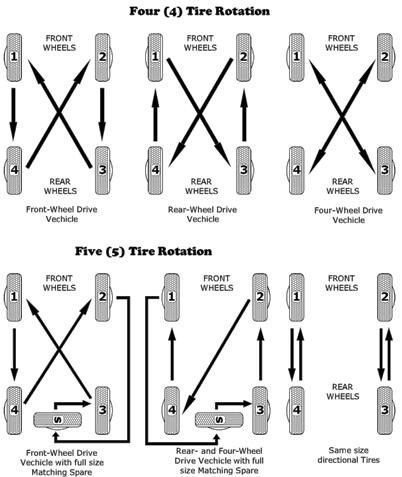
Place the jack and tool kit in the storage compartment.
Note:
Never place a flat tire or tool kit in the passenger compartment after a wheel has been changed. In the event of a sudden stop or an accident, loose equipment may move and cause serious injury. Store the flat tire and tool kit in the designated storage compartments.
Vehicles equipped with a turbocharged engine
Vehicles equipped with a naturally aspirated engine
The tire pressure display system will warn the driver of low tire pressure through a warning message.
The tire pressure display system will be activated when the vehicle speed reaches 32 km/h. The system may also not immediately respond to a drop in tire pressure (for example, a tire puncture when driving over a sharp object).
Note:
If the low tire pressure warning light comes on while the vehicle is moving, never depress the brake pedal hard.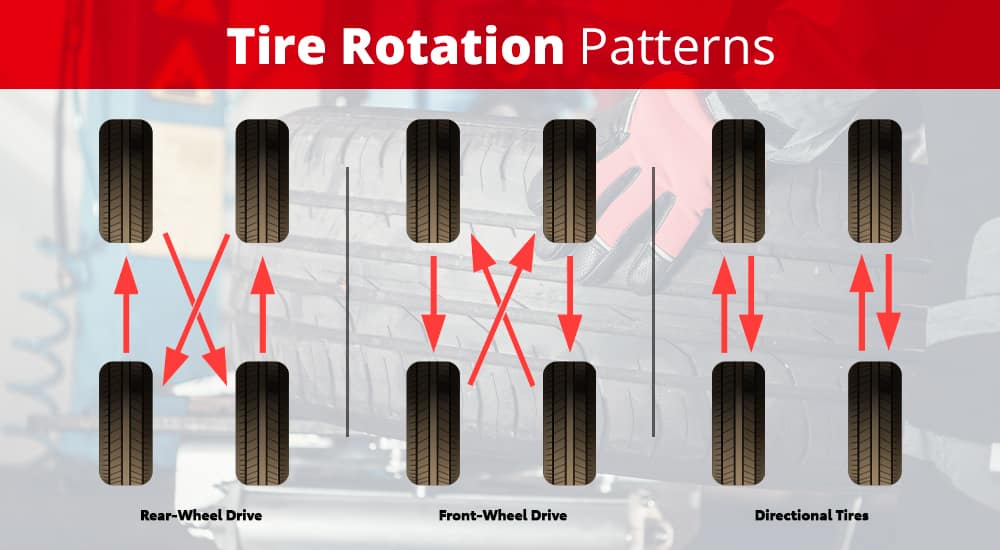 Continue driving in a straight line, gradually reducing your speed. Then slowly pull off the road to a safe place. Otherwise, sudden braking may cause serious injury and an accident.
Continue driving in a straight line, gradually reducing your speed. Then slowly pull off the road to a safe place. Otherwise, sudden braking may cause serious injury and an accident.
Check the air pressure in all 4 tires, adjust the air pressure if necessary. Information about the recommended tire pressure can be found on the information label, which is located on the front of the driver's door.
Even if the vehicle has traveled a short distance. The tires heat up and the air pressure in the tires increases accordingly. Allow tires to cool before adjusting air pressure. For details, refer to Wheels and Tires in Chapter 11. The tire pressure display system will not work if the vehicle is stopped. After adjusting the tire pressure, drive faster than 32 km/h for the tire pressure display system to check the tire pressure. if the air pressure is correct, the warning light should turn off after a few minutes.
If the warning light remains on after adjusting the tire pressure, the tire may be seriously damaged.